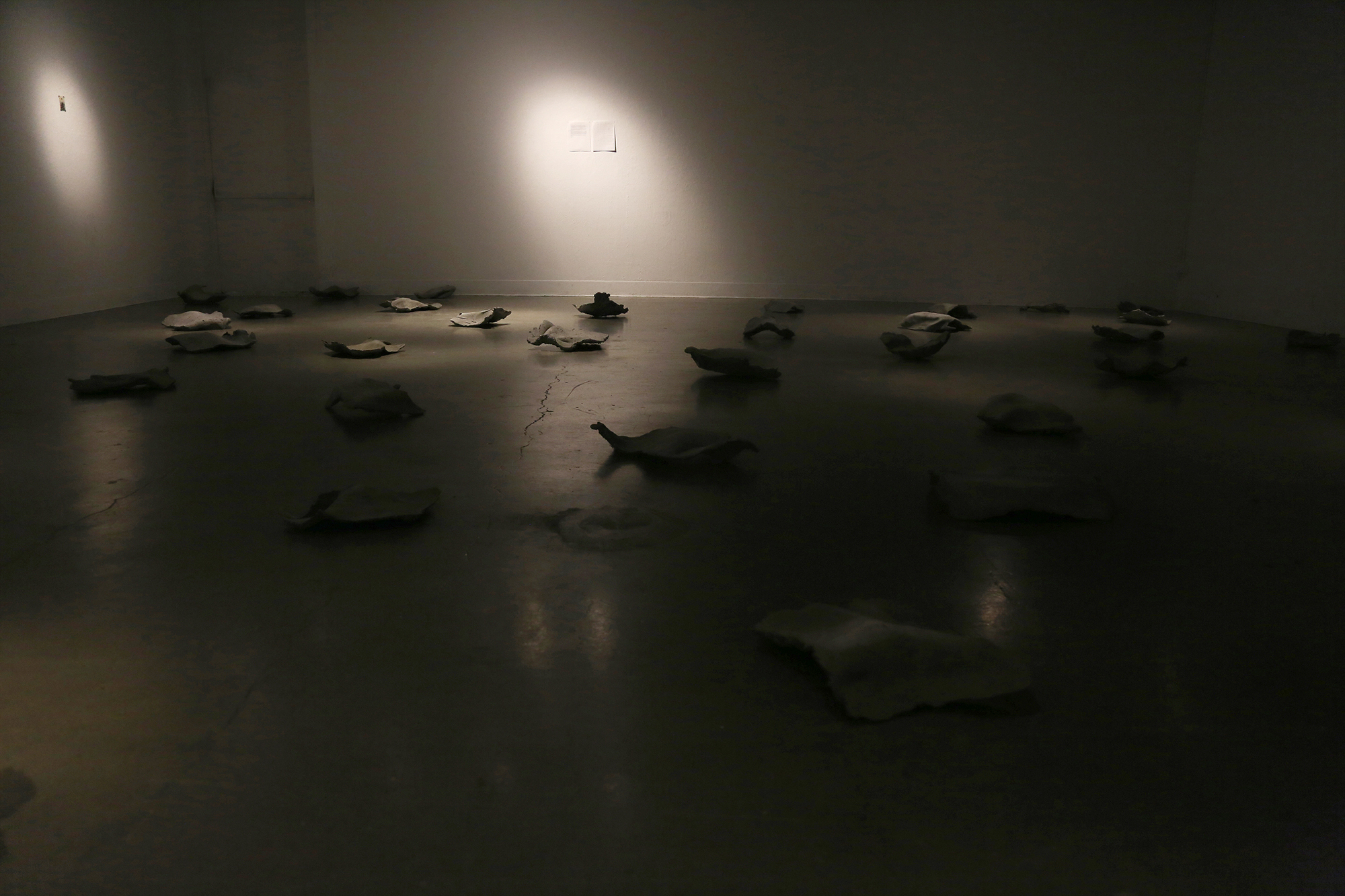Edward Said wrote about the contrapuntal as a palimpsest of two things at once; the exile who embodies a plurality of place. Similarly, I exist within a multiplicity of borders, though now I refer to my own gender. I use Said’s image of the exile as a way to frame my trans identity within the larger diasporic narrative of my family.
This took form in my installation where I cast the backs of friends who have a relationship to migration - either by may of immigration or through gender expression. I then abstracted their body molds using sand and cast them in concrete. The outcomes are sculptural body casts that display a map of displacement across the concrete gallery floor, each back resisting, making their own wave in a sea of many.
These sculptures were accompanied by a mural print of my grandfather swimming, possibly the Atlantic, possibly the Mediterranean, probably the 1930s. immersed within a sea of no borders, a floating head, a body implied. a disembodiment of possibility. (mural sized, hung low so the bottom of the sea bends onto the floor)




a letter to my collaborators:
this is not a single body but many bodies.
they do not offer an unveiling of anatomy; instead they make visible their own hiding.
they are genderless, they have no color, no classification.
they speak to difference without differentiating.
hard and heavy, lying down like animals, they carry their own weight.
backs are illegal, backs migrate. their curves like waves, they move.
debris, dust, fragmentation.
they are strong, they work, they become sore, they sometimes break, these backs are precarious, these backs are cared for.